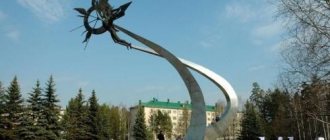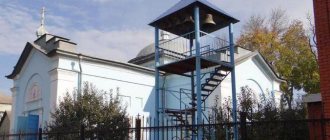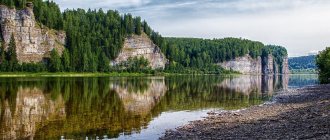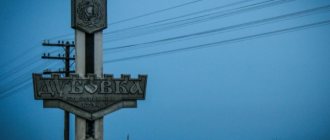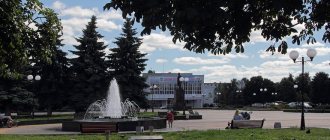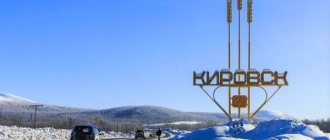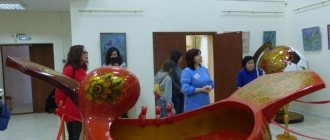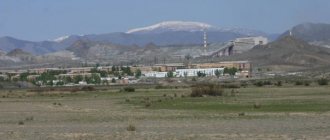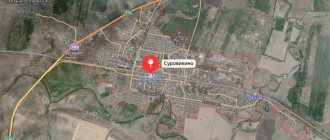This term has other meanings, see Lgov (meanings).
| City Lgov Olgov Coat of arms |
| A country | Russia, Russia |
| Subject of the federation | Kursk regionKursk region |
| Urban district | Lgov city |
| Coordinates | 51°40′00″ n. w. 35°16′00″ E. long / 51.66667° north w. 35.26667° E. d. / 51.66667; 35.26667 (G) [www.openstreetmap.org/?mlat=51.66667&mlon=35.26667&zoom=12 (O)] (Z)Coordinates: 51°40′00″ N. w. 35°16′00″ E. long / 51.66667° north w. 35.26667° E. d. / 51.66667; 35.26667 (G) [www.openstreetmap.org/?mlat=51.66667&mlon=35.26667&zoom=12 (O)] (I) |
| Based | in 1152 |
| Former names | Olgov |
| City with | 1779 |
| Square | 37.4 km² |
| Center height | 150 |
| Population | ↘19,533[1] people (2016) |
| Density | 522.27 people/km² |
| Names of residents | Lgovchane, Lgovchanin, Lgovchanka; |
| Timezone | UTC+3 |
| Telephone code | +7 47140 |
| Postcode | 307750 Center |
| Postal codes | 307742-Villages, 307743-Sherekino, 307744-Voronino, 307751-Lgov1, 307752-Lgov2, 307753-Lgov3, 307754-Post office st. Primakova |
| Vehicle code | 46 |
| OKATO code | [classif.spb.ru/classificators/view/okt.php?st=A&kr=1&kod=38410 38 410] |
| Lgov Moscow |
| Kursk Lgov |
Audio, photo and video
on Wikimedia Commons
K: Settlements founded in 1152
Lgov
- a city in the Kursk region of Russia. Located on the banks of the Seim River (a tributary of the Desna), 76 km from Kursk[2]. Lgov is an independent municipal entity (urban district) within the Kursk region; in addition, the city is home to local government bodies of the Lgov municipal district. Population - 19,533[1] people. (2016).
Modern Lgov is, first of all, a railway junction and an industrial center. Among its enterprises are a sugar factory, a feed mill, a dairy canning plant, an automation equipment plant, etc. The city has a developed social infrastructure: three secondary specialized educational institutions: a medical college, a technical school ROSI, vocational school No. 6; six secondary schools: the House of Children's Creativity, the Children's Art School, a hospital, a center for social assistance to families and children, a hotel, a network of libraries and club institutions, a cultural and leisure center, a youth sports school and the Lgov stadium.
Story
Lgov is one of the oldest cities of the Kursk Posemye - the historical region of the ancient Slavic tribe of northerners. Under the name "Olgov" the city was first mentioned in the Ipatiev Chronicle in 1152. The proximity of ancient Olgov to the Polovtsian nomads predetermined its future fate - at the end of the 12th century it was destroyed by the Polovtsians and ceased to exist for a long time. In 1571, on the site of ancient Olgov, there was a fortified border settlement of the southern outskirts of the Russian state - Gorodenskaya Watchman, which repelled frequent raids by the Crimean and Nogai Tatars. In the 1630s, the monastery of Demetrius of Thessaloniki arose next to the Gorodenskaya Watchman, which began to be called Olgovsky or Lgovsky after the name of the ancient city. The fate of Job of Lgov, a famous Russian monk in the 17th century, the founder of many monasteries, who did not accept the church reforms of Patriarch Nikon and became one of the most revered disseminators of the Old Believers, is connected with the Lgovsky Dmitrievsky Monastery. From 1657 to 1672 Job was the abbot of the Lgov monastery.
From October 20 (Old Style) 1721 to September 1 (Old Style) 1917 as part of the Russian Empire.
The Lgovsky Dmitrievsky Monastery was abolished in 1764. By that time, the monastery settlement had already become the center of trade and handicraft production throughout the area.
Lgov received the status of a city in 1779[3], when, during the establishment of the Kursk province, the settlement of the former Lgov monastery was transformed into the county town of Lgov. In 1780, by decree of Catherine II, Lgov was “highly granted” his own coat of arms with the image of a bustard bird in a green field, “of which there are many breeding in the vicinity of this city,” and in 1784 a general development plan was approved, the features of which the city has retained to this day.
At the end of the 19th century, Lgov became an important railway junction; Two roads pass through it, connecting Kyiv and Voronezh in one direction, and Kharkov and Bryansk in the other, which allowed the city to quickly develop its processing industry.
From September 1 (old style) to October 25 (old style) 1917 as part of the Russian Republic. Then the Russian Civil War of 1918-1923 began. In 1917-1919 the city was claimed by Skoropadsky and the Ukrainian State.
Since December 1922, as part of the Russian Soviet Federative Socialist Republic of the Union of Soviet Socialist Republics.
In 1928, Lgov became a district center, uniting the territory of five districts of the former Kursk province.
From October 27, 1941[4] to March 3, 1943, Lgov was occupied by German troops.
Since November 1941, the underground youth organization “Young Guard” operated in the city. The underground organization was started by driver V.I. Grudinkin (“Thunder”). The group also included S. S. Anikanov, I. S. Romanenko, N. A. Sekerin, V. I. Petrov, A. F. Romanenko, S. A. Kostyuchenko, V. S. Shkandin, M. P. Pasko and others . In January 1942, on the 11th kilometer of the Lgov-Gotnya railway, near the workers’ barracks, 7 members of the Young Guard, including its leader Grudinkin, died in an unequal battle, after which the Young Guard was led by the former head of OSOAVIAKHIM of the Lgov railway junction Anikanov. An underground youth group also operated in the village of Sugrovo; it included N.N. Tokarev, M.D. Sein, S.M. Brusentsev, A.P. and M.E. Litvinov. They began to fight the invaders on their own, cutting down communication line poles and sinking the ferry. Then Anikanov came to the Sugrov group, and it became part of the Young Guard. An underground group in the village of Sherekino also spontaneously formed and then became part of the “Young Guard”. The core of the organization was the Komsomol members of the railway junction (Lgov-1, Lgov-2, Lgov-3), they were united by the railway school teacher V.A. Kornyushkin and the former secretary of the Komsomol organization of the school S.A. Ilyasheva. Invaluable assistance to the Young Guard was provided by Alexandra Molokoedova (who died of typhus two weeks after the liberation of Lgov), who got a job at the commandant’s office: she saved the lives of many patriots by promptly warning about the danger; I listened to Sovinformburo reports on the radio, the information received was then used as information material for leaflets. Through intelligence radio operators N.A. Gritsenko and AM Ryabov, who were based in the illegal apartment of N.A. Malykh in Korenevo, the Lgov Young Guards were connected with the intelligence departments of the headquarters of the Bryansk and Voronezh fronts. The main target for the Young Guards was the Lgov railway junction; according to their reports, Soviet aviation more than once bombed the stations of the railway junction. On August 10, 1942, the occupiers, with the help of traitors, got on the trail of the underground organization, and over 30 people were arrested in the city. The case of the underground organization was classified as particularly important, and it was conducted by the military district commandant’s office in Rylsk. September 19, 1942 22 Young Guards (1. S. S. Anikanov; 2. M. V. Borodina; 3. S. M. Brusentsev; 4. A. I. Galushkin; 5. N. M. Gorlova; 6. M D. Grudinkina; 7. P. V. Grudinkin; 8. S. A. Ilyasheva; 9. V. A. Kornyushkin; 10. V. D. Korostelev; 11. A. P. Litvinova; 12. M. E Litvinova; 13. A. S. Marminov; 14. I. D. Nikolaev; 15. V. P. Nifontova; 16. A. A. Obydennykh; 17. Z. P. Obydennykh; 18. N. E. Pogrebnyak ; 19. M. D. Sein; 20. N. N. Tokarev; 21. N. T. Fedulov; 22. N. Ya. Chefranov) after torture were shot in the Rylsk prison (by decree of the Presidium of the Supreme Soviet of the USSR of May 10, 1965 years were posthumously awarded the Order of the Patriotic War; on September 19, 1992, a monument was erected to them in Lgov). Together with the Young Guards, another 28 residents of Lgov were shot in the Rylsk prison.
On March 3, 1943, he was liberated from Nazi German troops by Soviet troops of the Voronezh Front during the Kharkov operation of February 2-3, 1943:[4]
- 60th Army consisting of: 129th Rifle Brigade (Lieutenant Colonel Vasilyev, Alexander Alekseevich), 8th Engineering Brigade (Colonel Mentyukov, Nikolai Fedorovich); 150th Tank Brigade (Lieutenant Colonel Safronov, Ivan Vasilyevich).[5]
In 1954, nearby villages, including those near the station (Lgov-1, Lgov-2, Lgov-3), were included within the city limits. In 1963, Lgov received the status of a city of regional subordination.
Currently, Lgov is a municipality within the Kursk region. The legislative body is the City Council, the executive body is the City Administration. In Lgov there are local government bodies of the Municipal Formation "Lgovsky District". Two newspapers are published: “Courier” and “Lgovskie Novosti”.
Post-secondary education
Well, there is no problem with this, in Lgov there is the Kursk Assembly College, which trains specialists in various fields, and the Medical College, which also trains future workers.
You can apply, as in all other institutions - on a budget and commercial basis. Also, for all academic merits, students are provided with financial rewards in the form of adding money to the scholarship.
After receiving secondary vocational or technical education, all former students are given the opportunity to enroll in a profile at a more highly qualified educational institution. Or teachers or the director can help former students find suitable job opportunities or even reassign them to another city where there are more serious career opportunities.
Economy
- sugar factory
- valve plant (ruined)
- brick factory (ruined)
- reinforced concrete products plant (ruined)
- Automotive special equipment plant (ruined)
- winery (busted)
- dairy canning plant
- meat processing plant (busted)
- establishment of PKU IK-3 of the Federal Penitentiary Service of Russia, specializes in the production of stamped and welded products
- Factory "Shveya"
- bakery
In 2008, the city shipped goods of its own production and performed works and services worth 1.072 billion rubles.
About kindergartens
Children are, as they say, the flowers of life, but in order for them to grow and develop, and not turn into a herbarium, we need to monitor them and in every possible way direct them in the right direction. But how will parents raise their children if upbringing is not only about emotional, psychological and physical qualities, but also about fully providing for the child? At first glance, this is how everything should be, but it’s worth repeating: in order to earn money in this city, you have to work around the clock.
You can find an excuse: you don’t have time - send it to kindergarten, plus they will give you more useful and necessary knowledge there than at home. But it was not there! There are not so many kindergartens that are located within 100 kilometers. One at most.
By the way, in the city, abandonment is still practiced, for example: in Lgov 3 there are two kindergartens that no one needs, in which alcoholics and teenagers trying to assert themselves sit. Thank God, at least there are no drug addicts in the city.
Transport
Railway connection
Lgov is connected by railway with Kursk, Kiev, Bryansk, Orel, Kharkov, and Moscow. The main railway station is Lgov-1-Kyiv Moscow Railway. In addition to it, within the city limits there are stations Lgov-2-Smolensky (Lgov-Sortirovochny) and Sherekino.
Bus service
Buses that run from Lgov Bus Station:
[20]
- Lgov - Nadezhdovka;
- Lgov - Banishchi;
- Lgov - Olshanka;
- Lgov - Konyshevka;
- Lgov - Kudintsevo;
- Lgov - Rechitsa;
- Lgov - Borisovka;
- Lgov - Fitizh;
- Lgov - Ts. Bobrik.
Buses that depart from Lgov-1 Bus Station:
[21]
- Lgov - Moscow;
- Kursk - Mogilev;
- Kursk - Sumy;
- Bryansk - Lgov - Belgorod;
- Lgov - Kursk;
- Kursk - Rylk;
- Kursk - Korenevo;
- Kursk - Konyshevka;
- Kursk - Glushkovo;
- Kursk - Tyotkino;
- Kursk - Kalinovka;
- Lgov - Rylsk;
- Lgov - Korenevo;
- Lgov - Sudzha;
- Lgov - Kurchatov (cancelled);
- Lgov - Maryino (departs from the platform of the railway station - Lgov-1-Kyiv station).
- Lgov - Zheleznogorsk (via Konyshevka)
Buses that do not call at Lgov-1 Bus Station:
- Kursk - Kozino;
- Kursk - Elbow.
City public transport
Route taxis:
- No. 1 Center - Lgov-1 Station (on Kalinina Street);
- No. 2 Center - Station Lgov-2 - Railway Hospital;
- No. 3 Center - Lgov-1 Station (on 40-Let Oktyabrya Street);
- No. 4 Center - microdistrict. Nizhniye Derevenki;
- No. 5 Center - Lgov-1 Station - Sugar Factory (on 40 Let Oktyabrya Street);
- No. 6 Center - Station Lgov-1 - village. Fitizh;
- No. 7 Center - Station Lgov-1 - Plodosovkhoz;
- No. 8 Center - Sherekino village;
- No. 9 Center - Sherekino station;
- No. 10 Center - village. Gorodensk;
- No. 11 Center - village. Kudintsevo;
- No. 12 Center - Station Lgov-2 - Artakovo.
Notes[ | ]
- ↑ 123
The permanent population of the Russian Federation by municipalities as of January 1, 2022 (Russian). Retrieved April 27, 2022. Archived May 2, 2022. - Lardi-Trans.Com (unspecified)
(inaccessible link). Access date: August 6, 2012. Archived June 21, 2009. - Charter of the municipal formation "City of Lgov"
- THE USSR. Administrative-territorial division of the union republics on January 1, 1980 / Comp. V. A. Dudarev, N. A. Evseeva. - M.: Izvestia, 1980. - 702 p. — P. 157.
- ↑ 12
Directory "Liberation of Cities: A Guide to the Liberation of Cities during the Great Patriotic War of 1941-1945." M. L. Dudarenko, Yu. G. Perechnev, V. T. Eliseev and others. M.: Voenizdat, 1985. 598 p. https://gigabaza.ru/doc/76524-pall.html - Red Army website. https://rkka.ru Archived copy from September 30, 2022 on the Wayback Machine
- ↑ 1 2 3 4 5 6 7 8 9 10 11 12 13 14 15 16
People's Encyclopedia “My City”.
Lgov (undefined)
. Retrieved January 25, 2014. Archived January 25, 2014. - Kursk provincial statistical department. Population of the cities of Kursk province according to the censuses of 1920 and 1923. [Vol. 3]. - Kursk, 1927.
- All-Union Population Census of 1939. The size of the urban population of the USSR by urban settlements and intra-city areas (unspecified)
. Retrieved November 30, 2013. Archived November 30, 2013. - All-Union Population Census of 1959. The size of the urban population of the RSFSR, its territorial units, urban settlements and urban areas by gender (Russian). Demoscope Weekly. Access date: September 25, 2013. Archived April 28, 2013.
- All-Union Population Census of 1970 The size of the urban population of the RSFSR, its territorial units, urban settlements and urban areas by gender. (Russian). Demoscope Weekly. Access date: September 25, 2013. Archived April 28, 2013.
- All-Union Population Census of 1979 The size of the urban population of the RSFSR, its territorial units, urban settlements and urban areas by gender. (Russian). Demoscope Weekly. Access date: September 25, 2013. Archived April 28, 2013.
- All-Union population census of 1989. Urban population (undefined)
. Archived from the original on August 22, 2011. - All-Russian population census 2002. Volume. 1, table 4. Population of Russia, federal districts, constituent entities of the Russian Federation, districts, urban settlements, rural settlements - regional centers and rural settlements with a population of 3 thousand or more (unspecified)
. Archived from the original on February 3, 2012. - The size of the permanent population of the Russian Federation by cities, urban settlements and regions as of January 1, 2009 (unspecified)
. Retrieved January 2, 2014. Archived January 2, 2014. - All-Russian population census 2010. Volume 1. Number and distribution of the population of the Kursk region (unspecified)
. Retrieved January 31, 2014. Archived January 31, 2014. - Population of the Russian Federation by municipalities. Table 35. Estimated resident population as of January 1, 2012 (unspecified)
. Retrieved May 31, 2014. Archived May 31, 2014. - Population of the Russian Federation by municipalities as of January 1, 2013. - M.: Federal State Statistics Service Rosstat, 2013. - 528 p. (Table 33. Population of urban districts, municipal districts, urban and rural settlements, urban settlements, rural settlements) (undefined)
. Retrieved November 16, 2013. Archived November 16, 2013. - Table 33. Population of the Russian Federation by municipalities as of January 1, 2014 (unspecified)
. Access date: August 2, 2014. Archived August 2, 2014. - Population of the Russian Federation by municipalities as of January 1, 2015 (unspecified)
. Access date: August 6, 2015. Archived August 6, 2015. - Population of the Russian Federation by municipalities as of January 1, 2016 (Russian) (October 5, 2018). Retrieved May 15, 2022. Archived May 8, 2022.
- Population of the Russian Federation by municipalities as of January 1, 2022 (Russian) (July 31, 2017). Retrieved July 31, 2022. Archived July 31, 2022.
- Population estimate of the Kursk region as of January 1, 2018 (unspecified)
(inaccessible link). Archived from the original on March 29, 2022. - Population of the Russian Federation by municipalities as of January 1, 2022 (Russian). Retrieved July 31, 2019. Archived May 2, 2022.
- Population of the Russian Federation by municipalities as of January 1, 2022 (Russian). Date accessed: October 17, 2022. Archived October 17, 2022.
- taking into account the cities of Crimea
- https://rosstat.gov.ru/storage/mediabank/bul_Chislen_nasel_MO-01-01-2021.rar Population of the Russian Federation by municipalities as of January 1, 2022 (1.85 Mb, 07/30/2021)
- Information website of Lgov, Schedule for suburban routes of the city of Lgov (with a/c Lgov)
- Information website of Lgov, Bus schedule at Lgov bus station 1
- M.S. Lagutich.
Lgov stories. - Lgov, 2001. - P. 288. - M.S. Lagutich.
Provincial Chronicle. Lgov in the history of the Kursk region. - MUP "Kursk Printing House". — ISBN 978-5-8366-0067-7.
Attractions
There are three museums: the local history museum (Krasnaya Square, 20), the literary and memorial museum of the poet N. N. Aseev (Sovetskaya St., 77/7) and the literary and memorial museum of the writer A. P. Gaidar (K. Liebknecht St., 31 ). The house in which the writer V.V. Ovechkin lived during the creation of the series of essays “District Everyday Life”.
Among its architectural attractions is the estate of the Baryatinsky princes, which includes a gazebo in a pseudo-Gothic style, built by Field Marshal Prince A.I. Baryatinsky, the conqueror of the Caucasus, who captured the formidable leader of the highlanders Imam Shamil in 1859, the so-called “Shamil Tower”. According to local legend, Imam Shamil, on his way to Mecca, stayed for several days at the estate of Prince Baryatinsky and performed namaz (prayed) in this tower in the mornings and evenings.
The buildings of the former Zemstvo and city administrations, the former prison castle, the house of chamberlain P. P. Stremoukhov, the facade of a monument of industrial architecture - a complex of winery buildings - have been preserved. There are three operating churches in Lgov: St. Nicholas Church, built in 1910, an iconostasis, which was made according to the sketches of the famous artist N.D. Bartram by handicraftsmen from his Semenovskaya workshop; Assumption Church (1839) and the Old Believer Church of Demetrius of Thessalonica (1906).
Lgov is located in a picturesque area on both banks of the Seim River. The area of the city is 3746.7 hectares, there are more than 130 streets and alleys, the length of roads is 103 km, of which 59.3 km have asphalt concrete pavement. The city includes a natural monument - a park of centuries-old oak and ash trees, planted at the beginning of the 19th century.
Monuments: V.I. Lenin; natives of Lgov: N. N. Aseev and A. P. Gaidar; Lgov Young Guards, commander of the K-8 nuclear submarine, Hero of the Soviet Union, captain 2nd rank Bessonov V.B.; to fellow countrymen who died in local military conflicts (Afghanistan, Tajikistan, Chechnya); to the soldiers of the Red Army and civilians who died during the liberation of Lgov in March 1943; ancient brick buildings, built at the end of the 19th - early centuries. (including merchant houses and shops, the house of employees of the North-Donetsk railway, built in 1910 and nicknamed “Titanic” by local residents, etc.).
| Shamil Tower | Assumption Church in Nizhnye Derevenki | Monument to fellow countrymen who died in Afghanistan, Tajikistan and Chechnya |
Schools
What good can grow out of children who have seen ruins all their childhood. Oh, now readers will judge me and say that before everyone ran in the street, beat nettles with sticks, and everything was fine. To this I will answer that in the distant USSR there was no arbitrariness, every dog knew your child and in some sos-situations could tell you something!
And so, these children come to school and see that the teachers are trying to correct them, but it is not clear whether they will succeed.
In general, schools are probably the only thing the city can boast of. Educational institutions provide a complete and good basic education.
No matter how much I would like to write about this, they didn’t even notice it here! The second school, which is located on Lgov 1, will literally collapse soon. A serious and not at all small crack formed on the load-bearing wall of the building, due to which, in order to reduce the risk of collapse, any performances (New Year's matinees, etc.) were canceled.
And not only will the second school collapse soon, but also the residential buildings that stand on Liteinaya Street also suffer from numerous cracks into which you can actually stick your hand.
Famous residents of Lgov
- Alekseenko, Vladimir Alekseevich - geochemist (1939).
- Aseev, Nikolai Nikolaevich - poet (1889-1963).
- Belousov, Andrei Ivanovich - opera singer (1902-1991).
- Bessonov, Vsevolod Borisovich - commander of the nuclear submarine "K-8" of the 162nd brigade of the 17th submarine division of the Yokanga naval base of the Red Banner Northern Fleet, captain of the 2nd rank (1932-1970) [22].
- Ilya Fedorovich Bugaenko, professor, doctor of technical sciences, author of a large number of works on sugar production technology (1937-2010).
- Bukreev, Boris Yakovlevich - famous mathematician, professor at Kyiv University (1859-1962).
- Volobuev, Evgeny Vsevolodovich - artist (1912-2002).
- Gaidar, Arkady Petrovich - Russian writer (1904-1941).
- Grandi, Vasily Ivanovich - painter and artist of monumental and decorative art (1890-1970).
- Zakharov, Vladimir Ivanovich - professor-biologist, sculptor, author of memoirs about Lgov (1906-1994).
- Zubkov, Georgy Ivanovich - international journalist, professor, writer, playwright (1926).
- Kovalev, Dmitry Mikhailovich - poet (1915-1977).
- Lappo, Georgy Mikhailovich - geographer (1923).
- Milyutin, Vladimir Pavlovich - one of the creators of Soviet statistics (1884-1937).
- Ovechkin, Valentin Vladimirovich - writer (1904-1968).
- Nadenenko, Sergei Ivanovich - scientist in the field of antenna technology (1899-1968).
- Nadenenko, Fedor Nikolaevich - composer (1902-1963)[23].
- Safonov, Vadim Andreevich - writer (1904-1999).
- Syomina, Tamara Petrovna - actress, People's Artist of the RSFSR (1938).
How Lgov is reanimated under Starovoit
Roman Vladimirovich Starovoyt is a Russian statesman, head of the Federal Road Agency (Rosavtodor) of the Ministry of Transport of the Russian Federation since November 15, 2012.
So, as soon as he came to the post of governor, he immediately began to restore order in all the towns of the Kursk region. He himself began to travel around the entire area to see for himself where help was needed and what was not needed at all.
As a result of such checks, city leaders began to hang around. Roman Vladimirovich himself carefully monitors the situation in the region and at the slightest complaint (complaints can be sent to the official page of Roman Starovoit in VK) he reacts and corrects the mistakes made by representatives of local authorities.
From the very beginning, people thought that he would be blown away, but now they understand that if they do not interfere with him realizing his goals and projects, then after a certain period of time it will be possible to normalize life and restore at least half of the production that was before.
In art
Lgov was inspired by Nikolai Aseev’s poetic cycle “Kursk Territories” and the story “Town” by writer Vadim Safonov. Valentin Ovechkin’s essays “District Everyday Life”, many poems and the poetic book “About the boy Zhenya from the village of Nizhnie Derevenki” by Dmitry Kovalev were written on Lgov material. Literary sources about Lgov are collected in [www.gorodlgov.ru/literatura Library of the unofficial resource of the city of Lgov]. The city and its picturesque surroundings are depicted in the paintings of Evgeny Volobuev, Alexander Gorbachev and other artists.
Notes
- ↑ 123
www.gks.ru/free_doc/doc_2016/bul_dr/mun_obr2016.rar Population of the Russian Federation by municipalities as of January 1, 2016 - [www.lardi-trans.com/distance/ Lardi-Trans.Com]
- THE USSR. Administrative-territorial division of the union republics on January 1, 1980 / Compiled by V. A. Dudarev, N. A. Evseeva. - M.: Publishing house "Izvestia of the Soviets of People's Deputies of the USSR", 1980. - 702 p. — P. 157.
- ↑ 12
Directory "Liberation of Cities: A Guide to the Liberation of Cities during the Great Patriotic War of 1941-1945." M. L. Dudarenko, Yu. G. Perechnev, V. T. Eliseev and others. M.: Voenizdat, 1985. 598 p. gigabaza.ru/doc/76524-pall.html - Red Army website. rkka.ru.
- ↑ 1234567891011121314151617
[www.MojGorod.ru/kursk_obl/ljgov/index.html People's encyclopedia “My City”. Lgov]. Retrieved January 25, 2014. [www.webcitation.org/6MtKgxo8t Archived from the original on January 25, 2014]. - [demoscope.ru/weekly/ssp/rus59_reg2.php All-Union Population Census of 1959. The size of the urban population of the RSFSR, its territorial units, urban settlements and urban areas by gender] (Russian). Demoscope Weekly. Retrieved September 25, 2013. [www.webcitation.org/6GDOghWC9 Archived from the original on April 28, 2013].
- [demoscope.ru/weekly/ssp/rus70_reg2.php All-Union Population Census of 1970 The size of the urban population of the RSFSR, its territorial units, urban settlements and urban areas by gender.] (Russian). Demoscope Weekly. Retrieved September 25, 2013. [www.webcitation.org/6GDOiMstp Archived from the original on April 28, 2013].
- [demoscope.ru/weekly/ssp/rus79_reg2.php All-Union Population Census of 1979 The size of the urban population of the RSFSR, its territorial units, urban settlements and urban areas by gender.] (Russian). Demoscope Weekly. Retrieved September 25, 2013. [www.webcitation.org/6GDOjhZ5L Archived from the original on April 28, 2013].
- [demoscope.ru/weekly/ssp/rus89_reg2.php All-Union Population Census of 1989. Urban population]. [www.webcitation.org/617x0o0Pa Archived from the original on August 22, 2011].
- [www.perepis2002.ru/ct/doc/1_TOM_01_04.xls All-Russian Population Census 2002. Volume. 1, table 4. Population of Russia, federal districts, constituent entities of the Russian Federation, districts, urban settlements, rural settlements - regional centers and rural settlements with a population of 3 thousand or more]. [www.webcitation.org/65AdCU0q3 Archived from the original on February 3, 2012].
- [www.gks.ru/bgd/regl/B09_109/IssWWW.exe/Stg/d01/tabl-21-09.xls Number of permanent population of the Russian Federation by cities, urban-type settlements and districts as of January 1, 2009]. Retrieved January 2, 2014. [www.webcitation.org/6MJmu0z1u Archived from the original on January 2, 2014].
- [kurskstat.gks.ru/wps/wcm/connect/rosstat_ts/kurskstat/resources/ee617b804e86dcf6bf81ffb8fc91c3ba/vol+1.pdf All-Russian Population Census 2010. Volume 1. Number and distribution of the population of the Kursk region]. Retrieved January 31, 2014. [www.webcitation.org/6N2ZGXrqv Archived from the original on January 31, 2014].
- [www.gks.ru/free_doc/doc_2012/bul_dr/mun_obr2012.rar Population of the Russian Federation by municipalities. Table 35. Estimated resident population as of January 1, 2012]. Retrieved May 31, 2014. [www.webcitation.org/6PyOWbdMc Archived from the original on May 31, 2014].
- [www.gks.ru/free_doc/doc_2013/bul_dr/mun_obr2013.rar Population of the Russian Federation by municipalities as of January 1, 2013. - M.: Federal State Statistics Service Rosstat, 2013. - 528 p. (Table 33. Population of urban districts, municipal districts, urban and rural settlements, urban settlements, rural settlements)]. Retrieved November 16, 2013. [www.webcitation.org/6LAdCWSxH Archived from the original on November 16, 2013].
- [www.gks.ru/free_doc/doc_2014/bul_dr/mun_obr2014.rar Table 33. Population of the Russian Federation by municipalities as of January 1, 2014]. Retrieved August 2, 2014. [www.webcitation.org/6RWqP50QK Archived from the original on August 2, 2014].
- [www.gks.ru/free_doc/doc_2015/bul_dr/mun_obr2015.rar Population of the Russian Federation by municipalities as of January 1, 2015]. Retrieved August 6, 2015. [www.webcitation.org/6aaNzOlFO Archived from the original on August 6, 2015].
- taking into account the cities of Crimea
- [www.gks.ru/free_doc/doc_2016/bul_dr/mun_obr2016.rar Population of the Russian Federation by municipalities as of January 1, 2016. Table “31. Population of cities and towns by federal districts and constituent entities of the Russian Federation as of January 1, 2016.” RAR archive (1.0 MB)]
- Information website of Lgov, [www.47140.ru/avtobus-lgov Schedule for suburban routes of the city of Lgov (with a/c Lgov)]
- Information website of Lgov, [www.47140.ru/avtobus-lgov1.html Bus schedule at Lgov bus station 1]
- [gorodlgov.ru/?q=node/1084 Bessonov Vsevolod Borisovich | City of Lgov]
- Dictionaries and encyclopedias on Academician, [dic.academic.ru/dic.nsf/enc_biography/87753//Nadenenko Nadenenko, Fedor Nikolaevich]
Population[ | ]
| Population | |||||||||
| 1856[7] | 1897[7] | 1913[7] | 1923[8] | 1931[7] | 1939[9] | 1959[10] | 1967[7] | 1970[11] | 1979[12] |
| 3000 | ↗4300 | ↗4900 | ↗5034 | ↗8400 | ↘7732 | ↗21 328 | ↗26 000 | ↘25 110 | ↗26 523 |
| 1989[13] | 1992[7] | 1996[7] | 1998[7] | 2000[7] | 2001[7] | 2002[14] | 2003[7] | 2005[7] | 2006[7] |
| ↘25 643 | ↘25 500 | ↘25 100 | ↘24 500 | ↘24 000 | ↘23 700 | ↗23 783 | ↗23 800 | ↘22 900 | ↘22 600 |
| 2007[7] | 2008[7] | 2009[15] | 2010[16] | 2011[7] | 2012[17] | 2013[18] | 2014[19] | 2015[20] | 2016[21] |
| ↘21 844 | ↘21 800 | ↘21 634 | ↘21 453 | ↗21 500 | ↘20 951 | ↘20 579 | ↘20 246 | ↘19 905 | ↘19 533 |
| 2017[22] | 2018[23] | 2019[24] | 2020[25] | 2021[1] | |||||
| ↘19 176 | ↘18 774 | ↘18 435 | ↘18 145 | ↘17 890 | |||||
As of January 1, 2022, in terms of population, the city was in 709th place out of 1,116[26]cities of the Russian Federation[27].

